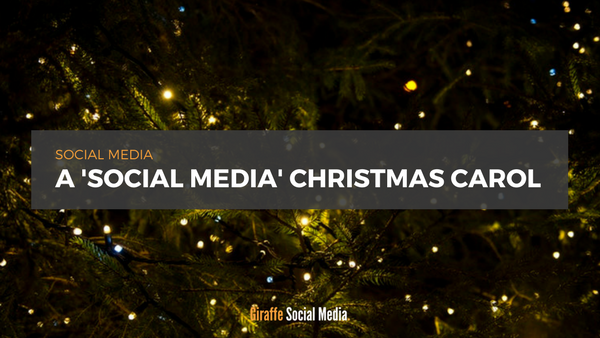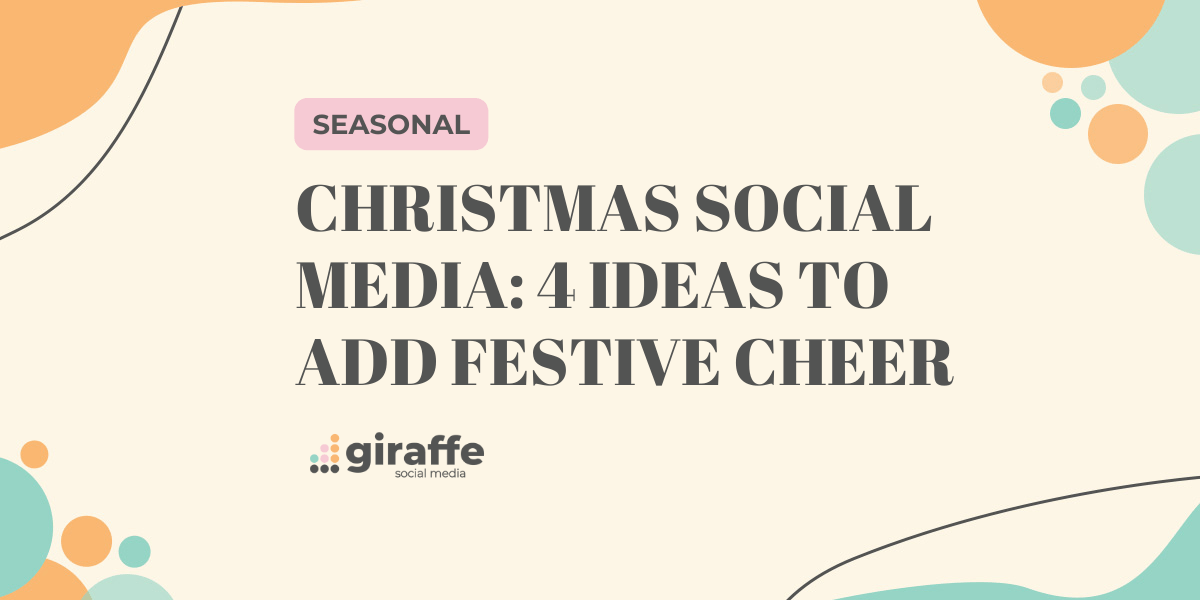Let’s all gather round for a not-so festive story I call ‘A Social Media Christmas Carol’ – a brief history of how online networking has changed.
Social media has undergone a journey over the years, from a fearful, misunderstood and somewhat unknown entity, to a diverse network that connects, improves and spreads cheer among users, but where did it all begin, and where is it all going?
The Social Media of Christmas Past
Back in the days of dial up internet, the first social media sites emerged, which were basic websites that connected people. The first recognisable social media site was Six Degrees that allowed people to create a profile and make friends. However, Friendster was once the biggest and most popular social media network that connected people through networks of friends. It was used for dating, making new friends and helping friends connect with new people. By 2006, it was pretty much dead – Facebook had stamped its footprint into the market and everything else seemed to fall in its wake. The bonds and connections between friends weakened and although Friendster tried to stay afloat, a series of technical difficulties and a lack of users resulted in its inevitable demise. As soon as blogging was introduced to the world, sites like Myspace and LinkedIn dominated the early 2000s with this idea of sharing your life to the world, meaning you could share your festive spirit to all your friends!
A popular messaging platform was MSN Messenger, which was renamed Windows Live Messenger before it was shut down in 2014. It provided fifteen years of awkward conversations, status updates, video calls, a series of emoticons and ‘Nudges’ and ‘Winks’, which were short videos designed to get the other person’s attention. MSN was once the only way to communicate with friends with an ability to ‘Appear Offline’ to avoid people contacting you. However, the platform was swiftly made redundant by Facebook’s messaging app as people could connect and talk with their friends all in one place.
Although social media had potential, it still wasn’t being used in the same way it is now.
The Social Media of Christmas Present
Presently, social media has moved away from desktop usability and turned its focus onto mobile phone apps. Social media strives to stay contemporary, but with so many giants in the playing field, it’s hard for new social sites to become popular. Facebook, Instagram and Twitter dominate amongst social media networks and are constantly changing and making improvements that keeps users entertained and engaged. Live video is the most recent development on social media as sites such as Facebook look to eliminate any reason for a user to leave their app.
Media that disappears has been made favourable by apps such as Snapchat, with Facebook and Instagram both taking on this idea of ‘Stories’ with images and video that are no longer available to view after twenty four hours. Instagram have created a bigger focus on photos, with many users this year gearing up to share images of their Christmas gifts for their friends to see.
Although many social media sites try to stay current, the market is moving quickly and constantly, meaning whatever is present at the moment is almost immediately outdated.
The Social Media of Christmas Future
It’s hard to predict what the future holds for social media sites, but there is definitely no sign of Facebook and Twitter going anywhere anytime soon. 2018 is bringing artificial intelligence, new algorithms and improvements for users. Social media will focus a lot more on relationships, between users and between the platform and a person. It seems sites are starting to use their methods for good, such as Facebook’s new A.I. technology that will try to prevent suicide amongst users. With this in mind, another turn for social media could be its focus on a person’s well-being, offering a more long-term relationship with posts and photos, instead of a fleeting ‘like’ or a 24-hour story.
There could also be this idea of a ‘Premium’ experience in social media. With more and more sites pushing advertisements into the faces of users, it could well be soon that sites start charging for individuals to get rid of the interruptions to videos and pop-ups.
However, it is quite likely that the sites of today will not be around in the future as technology develops and things become old news within minutes. With everything at the touch of a finger and pretty much every idea thought up and reused, it’s hard to predict what the future holds for social media, but it’ll definitely be a sight to stick around for.





